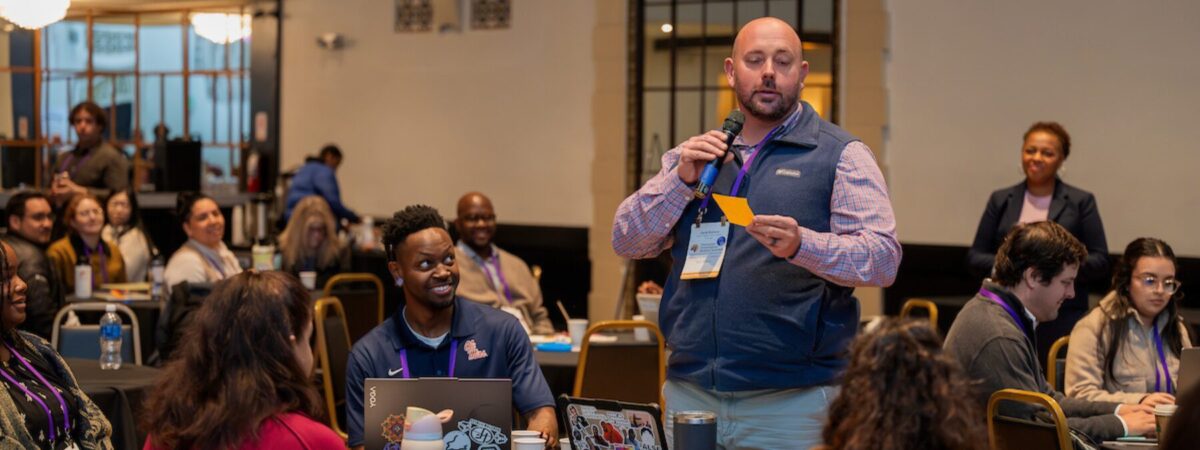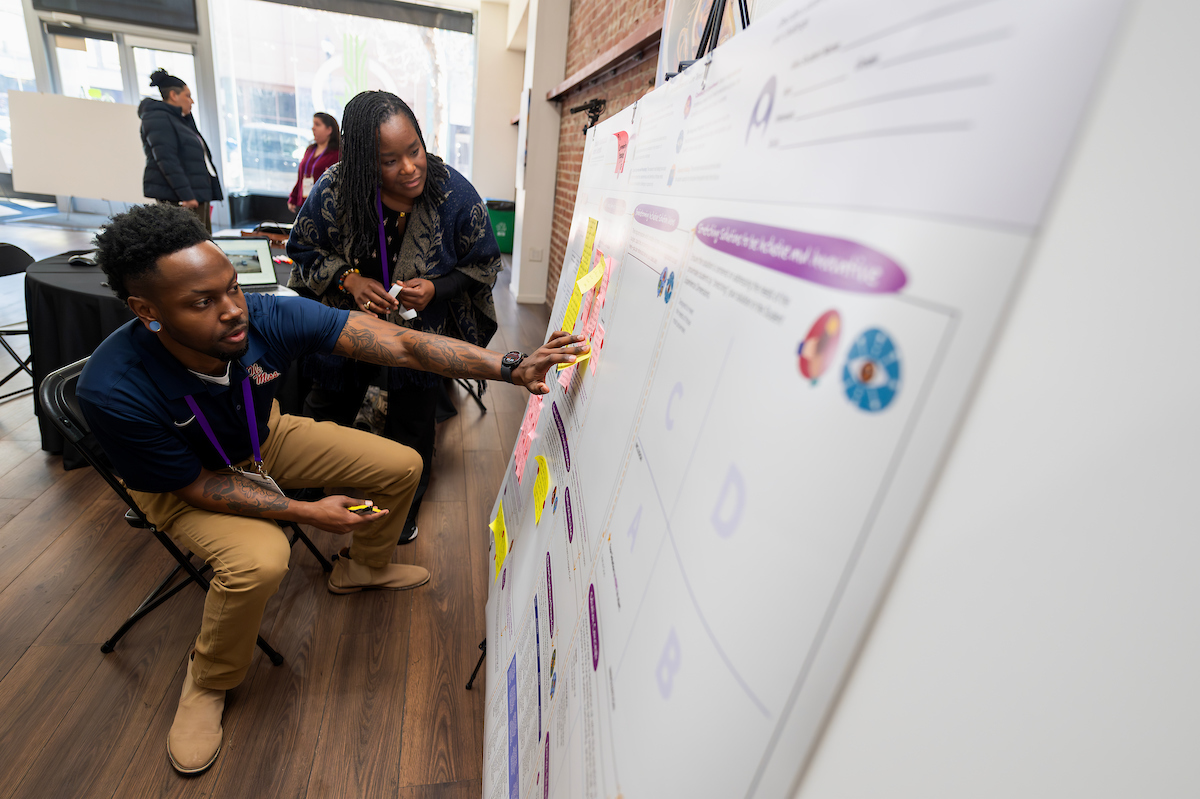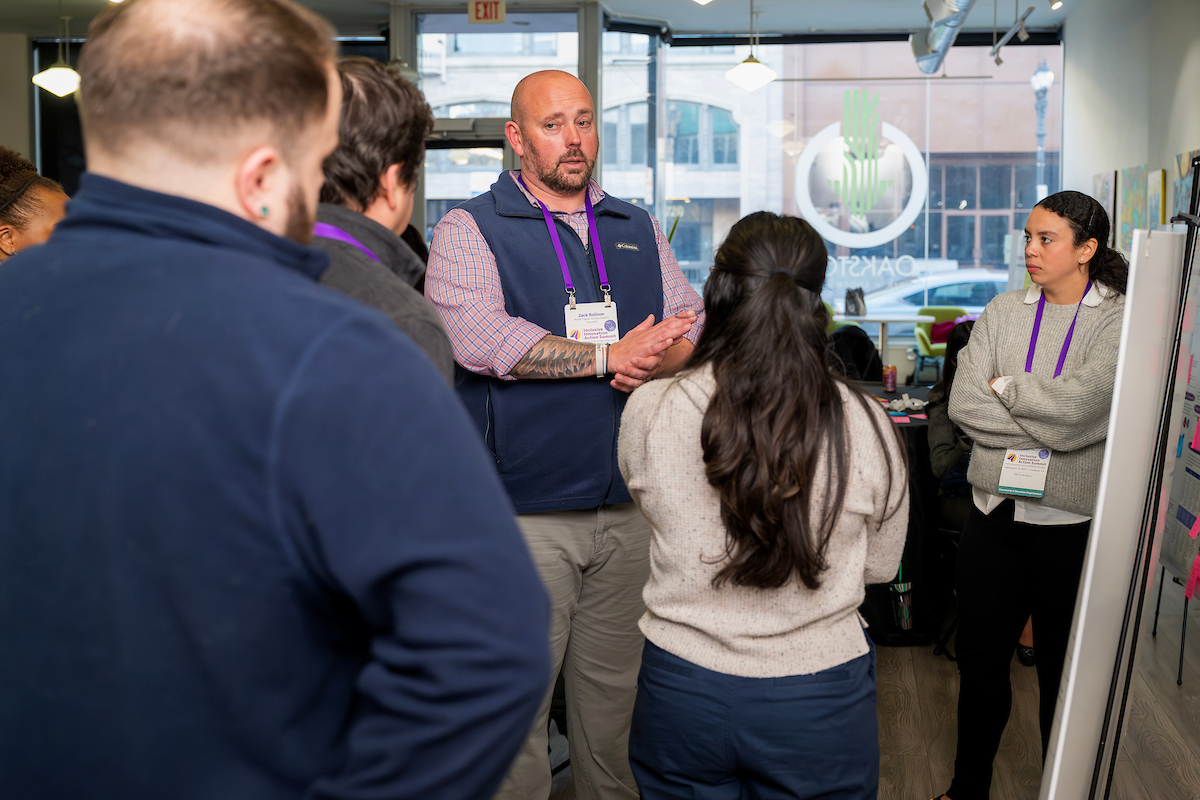
I wrote about how the Center’s 2023 convening convinced me of the importance of student voice in education research. It inspired me to urgently launch student advisory teams at all 11 Mississippi schools participating in the federally funded project I manage for the Baylor Center for School Leadership about adolescent substance use prevention. That change made all the difference.
I was eager to attend the Inclusive Innovation Action Summit in Oakland, California, in February 2025. But this time—in the spirit of Inclusive Innovation’s “Collective Ownership” core tenet—we were encouraged to bring at least one community partner with us because, according to Digital Promise, education transformation is most effective when it is “co-led, co-researched, and co-designed.”
I wanted to bring educators from the rural schools I work with in Mississippi, so I wrote a $4,500 travel grant to the William Magee Institute for Student Wellbeing at the University of Mississippi. The grant allowed me to bring the following individuals to the Action Summit: a principal of a small K-12 school in northeast Mississippi, a high school counselor from a different rural district, and a mental health professional who runs group counseling sessions at a middle and high school in a large school district.
Things got interesting quickly.

Marilyn Rhames and a licensed counselor who works with adolescents in Mississippi collaborate on a selected challenge during the Digital Promise Action Summit.
During the workshop session, a Digital Promise facilitator asked my team to jot down the problem of practice we wanted to workshop through their Inclusive Innovation process. Our challenge statement read: “There’s a gap between home and school. We don’t have family buy-in. Parentified students. Issues with transportation, childcare, etc. Family politics. Poor, hostile communications relative to parents.”
Next, we were asked which population was most impacted in the community. We wrote: “White male students from high-poverty, rural families.” Regarding the behaviors of concern, we wrote: “Chronic absenteeism. Poor mental health. Potential dropouts.”
When we reached the framework’s “Root Cause Analysis,” everything changed.
It was no secret that the principal in our group came to Oakland with a hefty dose of skepticism. A country man with a confident Southern accent, he ditched the healthy, gourmet meals served at the Action Summit in search of something closer to his down-home Mississippi meals. He struggled to relate to most speakers and attendees because they were from large urban school districts on the East or West Coasts; the basic resources they utilized to enrich their students, such as museums or public libraries, were hours away from his school. He dismissed many of the success stories shared at the summit as a pipe dream since their solutions were not applicable in his low-income, rural, and primarily white Southern context.
However, when he confronted the two words “root causes,” his perspective began to change. I watched a transformation in the administrator’s weary spirit, which had been battered and bruised from constant frustration that his best efforts weren’t stopping the teenage boys in his school from drinking, vaping, and dropping out of school. His cheeks turned red, and he got teary-eyed.

The principal from northeast Mississippi in Marilyn Rhames’ group shares his reflections and learnings with other attendees at the Action Summit.
The root cause analysis challenged his assumptions. Every time the principal gave a reason for a persistent problem at his school, he had to answer, “Why is that?” For example, he stated his struggle with angry or detached parents. When asked “Why?” he explained that the parents did not value their children’s education. When asked “Why?” he explained that many of his students’ parents did not finish school either. When asked “Why?” he explained that many of his students’ parents did not connect well with their teachers or administrators when they were students. When asked “Why?” he stated that when those parents were students, they did not feel loved or valued by the adults in the building. When asked “Why?” he paused, and his eyes welled up.“I’ve failed them,” the principal said, voice shaking. “All this time, I have blamed the parents, but I’m the one who has failed them.”
The room fell silent. The administrator’s voice cracked as he explained: In his attempts to address the students’ behaviors, he had inadvertently developed an antagonistic relationship with the boys and their parents. He had judged and shamed those families, reinforcing the avoidant, distrustful, and hostile disposition toward school that he wanted so badly to dismantle.
This administrator attended the Action Summit unsure of whether he belonged there. Not many people looked like him, served students like the ones he served, or dealt with the daily distresses of poverty-stricken rural America the way he did. Yet, at his most vulnerable moment, we all understood him. His words made it clear that, despite our diverse contexts, the root causes of the mental health crisis in our schools are mostly the same: Every child and every parent wants to feel like they belong, and when they don’t feel like they matter, they can’t thrive.
My team of four came to embody Digital Promise’s co-research and co-design tenets. We understood that even the most barren, rural communities have assets that we can leverage for change. For instance, we imagined local churches, restaurants, and mom-and-pop shops being enthusiastic partners upon learning viable ways to support our students. We dreamed about local congregations and businesses donating food and supplies for a monthly “Family Sunday Dinner” in the school cafeteria. We asked each other, “Wouldn’t this help bridge the gap between home and school, especially for our troubled boys? We can even have a 15-minute parenting class led by the school counselor or the telehealth counselor during dessert!”
Our trip to California for the Digital Promise Inclusive Innovation Action Summit caused a depleted Mississippi principal to see himself, his students, and his community in a new light. That darn root cause analysis broke his heart, then—like magic—put it neatly back together again.